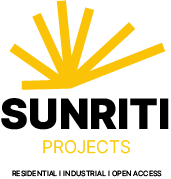
Capital Expenditure (Capex) Model
The responsibility for funding the setup of the solar power plant rests with the customer. SUNRITI PROJECTS assumes the role of an Engineering Project company, overseeing the entire project lifecycle, from design and engineering to procurement, installation, and commissioning. Additionally, SUNRITI PROJECTS offers comprehensive technical expertise, including feasibility and project reports, as well as handling interactions with regulatory bodies such as the Electricity Board and CEIG, including securing the necessary project site clearances.
In this CAPEX model, the customer retains ownership of the plant and is eligible for tax benefits related to depreciation. The payback period for this CAPEX model typically spans around 5 to 6 years, factoring in considerations like module degradation, operation and maintenance costs, and more.
